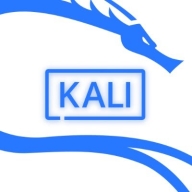

Red Hat Enterprise Linux (RHEL) and Kali Linux compete in the Linux distribution market. Users are happier with RHEL's support but believe Kali Linux offers better features, making it more valuable for specific use cases such as cybersecurity.
Features: RHEL is known for stability, security, and enterprise-level support. Kali Linux is valued for specialized tools, cybersecurity functionalities, and versatility. RHEL is preferred for enterprises, while Kali Linux is ideal for penetration testing.
Room for Improvement: RHEL could improve in cost and complexity of updates. Kali Linux users suggest enhancements in documentation and user-friendliness. The primary concern for RHEL is cost, and for Kali Linux, it is usability.
Ease of Deployment and Customer Service: RHEL is noted for extensive support and reliable deployment. Kali Linux, while efficient in deployment, offers less structured customer service. RHEL is easier to deploy in large-scale environments due to robust support.
Pricing and ROI: RHEL has higher setup costs but provides high ROI due to stability and support. Kali Linux has lower upfront costs, delivering good value for money but a lower ROI compared to RHEL. Red Hat generates better long-term returns despite higher initial expenses.
| Product | Market Share (%) |
|---|---|
| Red Hat Enterprise Linux (RHEL) | 8.6% |
| Kali Linux | 3.0% |
| Other | 88.4% |


| Company Size | Count |
|---|---|
| Small Business | 9 |
| Midsize Enterprise | 1 |
| Large Enterprise | 7 |
| Company Size | Count |
|---|---|
| Small Business | 84 |
| Midsize Enterprise | 47 |
| Large Enterprise | 249 |
Kali Linux is widely used by organizations for penetration testing, vulnerability assessments, web application security, network audits, ethical hacking, and open-source intelligence, providing extensive free features.
Organizations run Kali Linux in virtualized environments alongside other operating systems, employing tools for automated scans, malware identification, infrastructure testing, and application development or hosting. These users benefit from lower maintenance requirements and a smaller footprint. The toolset includes Nmap, SQLMap, Metasploit, and Hydra, ensuring effective security assessments. Its high scalability, performance, user-friendly interface, and extensive documentation enhance the platform's usability. Known for stability, flexibility, and virus resistance, Kali Linux supports web security, troubleshooting, and configuration tasks comprehensively.
What are the most important features of Kali Linux?
What benefits and ROI should users look for in reviews?
Kali Linux can support industries in improving security through stable and flexible environments that resist viruses and provide extensive documentation. Users employ it for web security, troubleshooting, and configuring capabilities. Necessary improvements include automation, user-friendliness, and integrating AI and blockchain. Enhancements in security features, faster installations, and better learning tools are also essential. Machine learning integration and non-enterprise user functionalities can address current limitations.
Red Hat Enterprise Linux is recognized for its stability, security, and performance, serving diverse industries with its robust support and seamless cloud deployment capabilities.
Red Hat Enterprise Linux provides comprehensive server applications across cloud environments, featuring tools like Ansible for enhanced user experience. It integrates OpenShift, Identity Management, and automation, supported by extensive documentation. Users seek easier upgrades, enhanced network virtualization support, and improved live patching.
What are the key features of Red Hat Enterprise Linux?In sectors like finance, telecommunications, and education, Red Hat Enterprise Linux is crucial for running stable, secure systems. Its application spans web servers, data management, and containerization through tools like Kubernetes. Organizations adopt it for on-premises, virtualized, and cloud environments, ensuring robust infrastructure management.
We monitor all Operating Systems (OS) for Business reviews to prevent fraudulent reviews and keep review quality high. We do not post reviews by company employees or direct competitors. We validate each review for authenticity via cross-reference with LinkedIn, and personal follow-up with the reviewer when necessary.